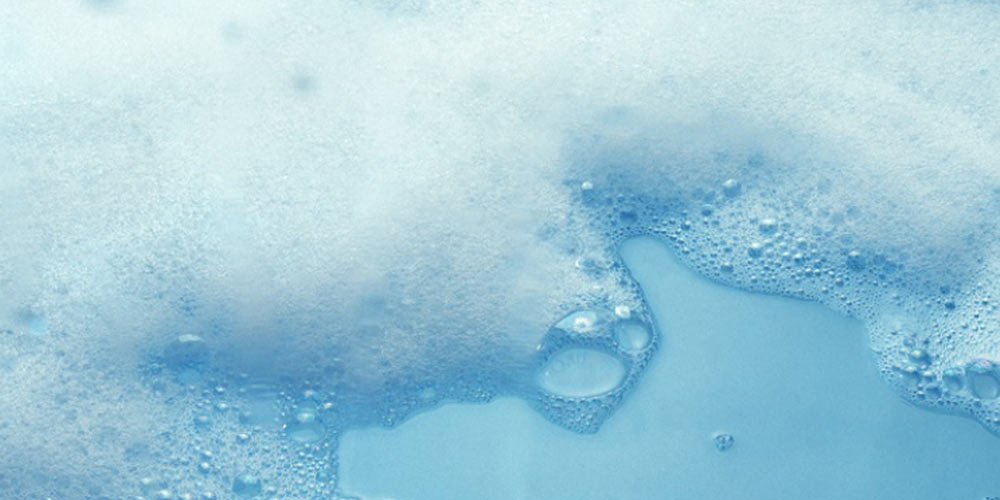Why Defoamers Are Essential in Water Treatment and Waste Management
Why Defoamers Are Essential in Water Treatment and Waste Management
Blog Article
Choosing the Right Defoamer for Your Details Application Demands
Selecting the suitable defoamer for particular application requirements is a nuanced process that demands cautious factor to consider of several factors, such as the foam kind, medium, and operating conditions. Comprehending the nuances of defoamer performance-- including rate and persistence-- while additionally making up environmental and regulative variables is critical. Additionally, engaging in tests and seeking advice from producers can give valuable insights. Browsing these complexities can be overwhelming, and the consequences of a bad option might be significant. What strategies can be employed to make certain an optimal choice?
Understanding Foam Development
Foam formation happens when gas is entraped within a liquid, producing a secure structure of bubbles. This phenomenon can considerably affect numerous commercial processes, particularly in markets such as food production, drugs, and wastewater therapy. The existence of foam can prevent mixing, decrease product quality, and also cause functional inadequacies.
Foam generally forms because of a combination of aspects, including surface-active representatives, anxiety, and the features of the liquid stage. Surfactants lower the surface stress of the liquid, facilitating the development of bubbles that can support and integrate. Agitation, whether from mechanical mixing or gas introduction, improves bubble development, bring about enhanced foam quantity.
Recognizing the technicians of foam development is important for markets aiming to maximize their procedures. By identifying the details problems that promote foam generation, companies can carry out strategies to reduce its impacts.
Kinds Of Defoamers Available
Different sorts of defoamers are available to resolve the challenges postured by foam in industrial applications. defoamers. Generally categorized, defoamers fall into 3 classifications: silicone-based, non-silicone-based, and all-natural defoamers
Silicone-based defoamers are renowned for their efficiency and stability across a vast array of temperature levels and pH degrees. They are normally utilized in applications where strong foam reductions is required, such as in paints, adhesives, and coverings. Their low surface area tension permits quick foam collapse.
Non-silicone-based defoamers, often made from organic substances, offer an alternative for applications conscious silicone residues. These defoamers can be more split right into polyether and ester kinds, each customized to satisfy particular formulation needs. Non-silicone defoamers are frequently used in food handling and personal treatment items due to their compatibility with various formulas.
Natural defoamers, originated from plant or pet sources, are acquiring traction due to their green profile. These products are especially appealing in applications where regulative compliance and sustainability are paramount, such as in agrochemicals and biotechnology.
Selecting the best sort of defoamer is important for optimizing performance and ensuring compatibility with particular applications.
Key Application Factors To Consider
When selecting a defoamer, it is crucial to think about the particular application requirements to guarantee optimal performance. defoamers. Different sectors have unique requirements, such as food processing, pharmaceuticals, or wastewater treatment, and each application may call for unique defoaming properties
Trick aspects to review consist of the tool in which the defoamer will certainly be used, whether it is water-based, oil-based, or a mix thereof. The temperature level and pH levels of the application can likewise greatly affect the effectiveness of a defoamer. Additionally, compatibility with other chemicals present in the system is vital to protect against negative reactions that can jeopardize performance.
Another crucial factor to consider is the frothing actions of the specific system. Understanding whether the foam develops quickly or slowly can direct the choice of a defoamer that targets the origin cause properly. The preferred rate of defoaming can affect the choice, as some applications require rapid action while others might tolerate slower defoaming procedures.
Lastly, regulative and ecological factors to consider need to not be neglected, specifically in markets with rigorous compliance needs. Selecting a defoamer that aligns with these elements ensures both efficiency and safety in the application.

Performance Screening Approaches
Examining the efficiency of a defoamer calls for a methodical strategy to testing that properly determines its efficiency in certain applications. Numerous performance screening approaches can be employed to ascertain the ideal defoamer for a given formulation.
One usual method is the bubble examination, which reviews the defoamer's ability to minimize foam quantity with time. This test entails producing a steady foam and afterwards including the defoamer to observe the price of foam collapse. One more approach is the dynamic foam examination, where foam is generated under regulated conditions to imitate real-world application scenarios. This strategy gives understandings right into how the defoamer does under differing shear problems.

Ultimately, selecting the appropriate performance screening technique relies on the specific application and the kind of foam being dealt with. Each method supplies valuable data that can assist formula modifications and boost the effectiveness of the defoamer in sensible applications.
Finest Practices for Selection


Next, consider the defoamer's performance in terms of rate of activity and perseverance. A quick-acting defoamer might be essential for processes where rapid foam suppression is important, while a much more relentless formulation may be required for long term foam control. Furthermore, assess the ecological influence of the defoamer, including its biodegradability and any type of regulative compliance requirements.
Conduct trials with picked defoamers to determine their performance in real-world problems. This action is vital to validate that the selected product satisfies performance expectations. Finally, consult with suppliers or vendors for technological assistance and assistance, as they can supply valuable insights right into product formulas and application methods. By sticking to these finest techniques, you can boost foam control efficiency and make certain the longevity of your processes.
Conclusion
In recap, choosing the appropriate defoamer requires moved here a thorough assessment of different aspects, consisting of foam kind, medium, operating conditions, and ecological considerations. Recognizing the distinct features of foam development and the offered defoamer alternatives is essential. Additionally, utilizing reliable efficiency testing methods and sticking to finest techniques during the option procedure will improve the probability of achieving ideal defoaming outcomes. Eventually, an educated selection technique will resolve particular application requirements and mitigate lathering challenges read review effectively.
Selecting the appropriate defoamer for details application demands is a nuanced process that demands careful factor to consider of several factors, such as the foam kind, operating, and medium conditions.Picking the best defoamer is essential for achieving ideal efficiency in foam control applications. A quick-acting defoamer might be essential for procedures where rapid foam suppression is vital, while a much more persistent formulation may be needed for long term foam control.In summary, choosing the appropriate defoamer demands a detailed assessment of different aspects, consisting of foam type, medium, operating problems, and environmental factors to consider. Recognizing the distinct attributes of foam formation and the available defoamer options is critical.
Report this page